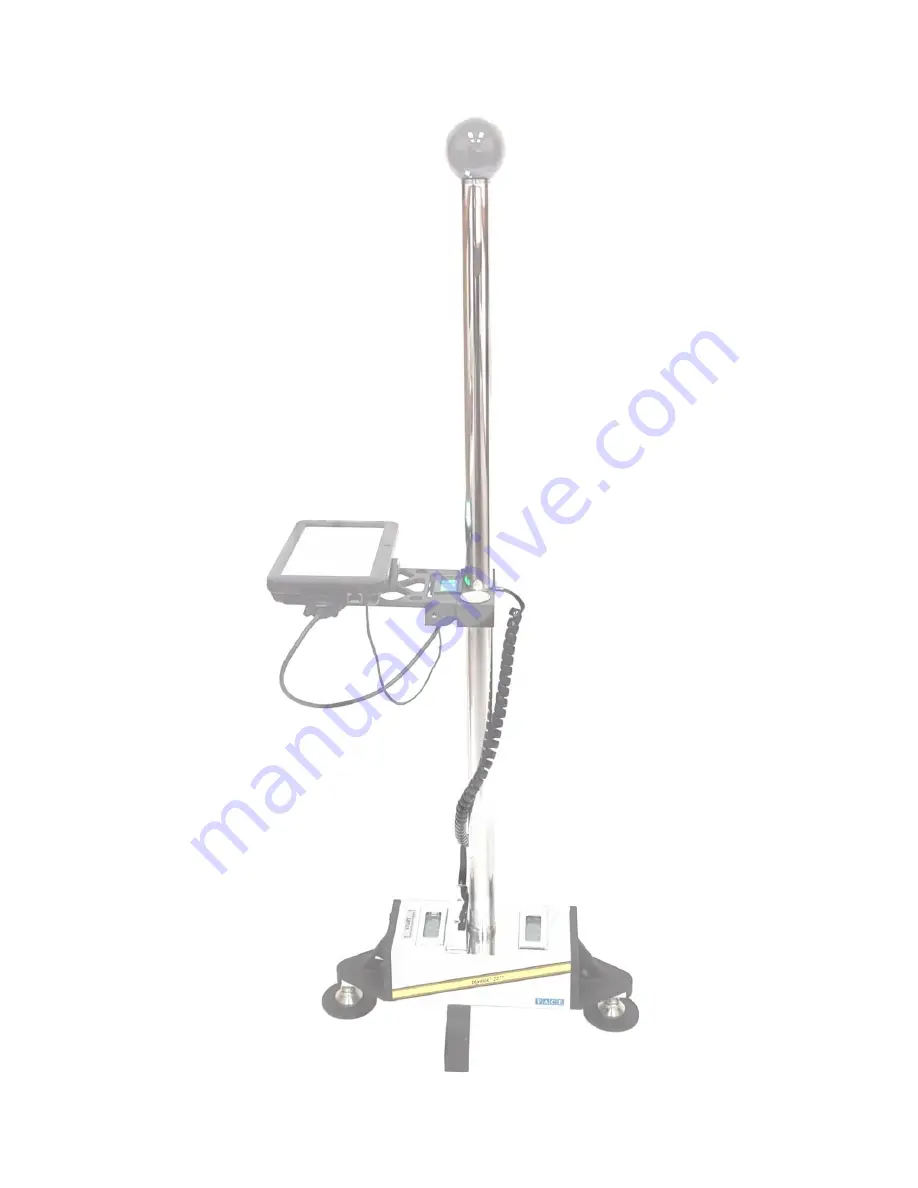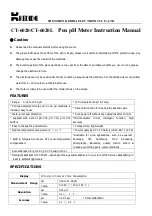
Appendix B Road Dipstick
®
Capabilities
B-1
The Dipstick
was invented and developed specifically for measuring the roughness of highways
and the flatness and levelness of floors. However, because of its inherent ability to measure
elevation differences very precisely, the Dipstick
has been found to have other uses that can be
very valuable. Here is a short list of some of the possible uses of the Dipstick:
1.
The Dipstick
produces the most accurate and precise elevation profiles possible
. Whenever
various profiling devices are compared on roads, highways, and bridges, invariably the
Dipstick
profile is what they are all compared to.
2.
The Dipstick
and its accompanying software can compute a host of highway roughness
indices. You can have the International Roughness Index or
IRI, Half-Car IRI, Rut
Depth,Gap under the Straight Edge,
California Profilograph emulation, Mayes Meter
emulation, RMSVA, and others. Many of these reports can be produced directly on the on-
board computer. The others can be done on any Windows desktop PC.
3.
The Dipstick
can quickly and easily
measure the actual as-built slope
of a tilted surface such
as a ramp or drain.
4.
The Dipstick
can quickly and easily
measure the camber of girders and beams
both before
and after loading. The difference between them is the amount of bending the beam has
undergone. The built-in software can calculate this for you instantly and print the results out
as a table showing the amount of deflection at every point.
5.
The Dipstick
can be used to
set the elevations of bridge-deck rails
. It has been shown that
the finished bridge deck surface follows the contours of the temporary rail upon which the
bridge deck screeds ride. The smoothness of the finished curved surface depends
substantially on the smoothness of the curve of the rails. The Dipstick
can provide a table of
corrections, either visible on the screen of the Dipstick's
computer, or printed out, for the
crew to make to bring the rail to the desired curve.
6.
The Dipstick
can be used to make nondestructive
measurements of the thickness of fills and
coatings
, such as skim coats and asphalt overlays. Since the Dipstick
is capable of
calculating and displaying the difference between any two lines, if one line is run on the
subgrade before the skim coat or filler is applied, and one line is run at the same location
afterwards, the difference between the two is equal to the thickness of the overlay. The high
degree of precision and accuracy of the Dipstick
(better than 0.0005"/0.0127mm) and the fact
that the difference or thickness is calculated and displayed every 1 foot/300 mm along the
measurement line, makes the Dipstick
a useful tool for this purpose.
7.
The Dipstick
can be used to
make precise elevation surveys
within a limited area for
specialized reasons, such as the mounting of certain types of industrial or laboratory-type
equipment.
8.
The Dipstick
can be used to produce a similar but more detailed elevation survey that
produces a 3-D picture of the surface
which can be very useful in certain applications.
Summary of Contents for Dipstick 2200 Series
Page 2: ...This page is intentionally blank...
Page 7: ...DIPSTICK 2277 PARTS LIST v The Dipstick 2277 Case Behind the Top Foam Lid...
Page 10: ...This page is intentionally blank...
Page 24: ...This page is intentionally blank...
Page 42: ...This page is intentionally blank...
Page 60: ...This page is intentionally blank...
Page 68: ...This page is intentionally blank...
Page 80: ...This page is intentionally blank...
Page 86: ...This page is intentionally blank...
















































